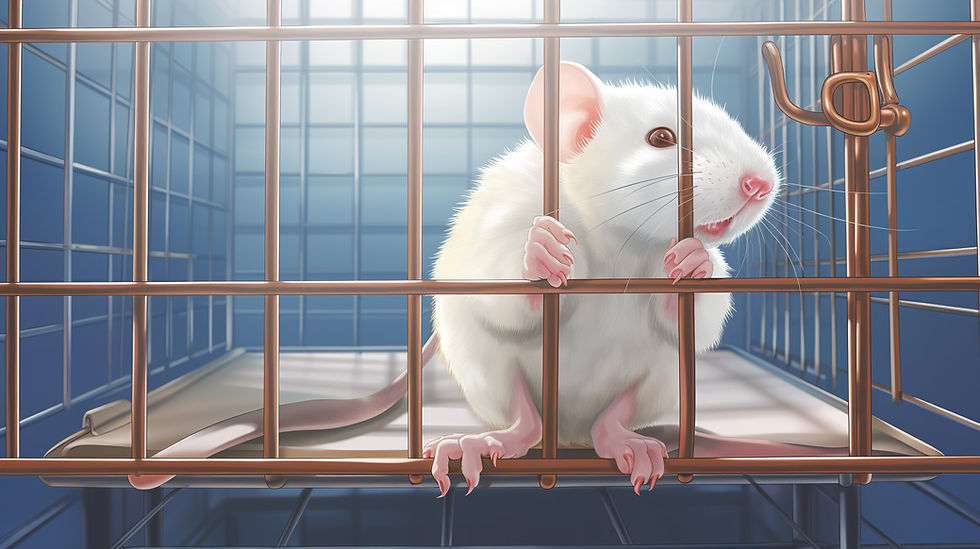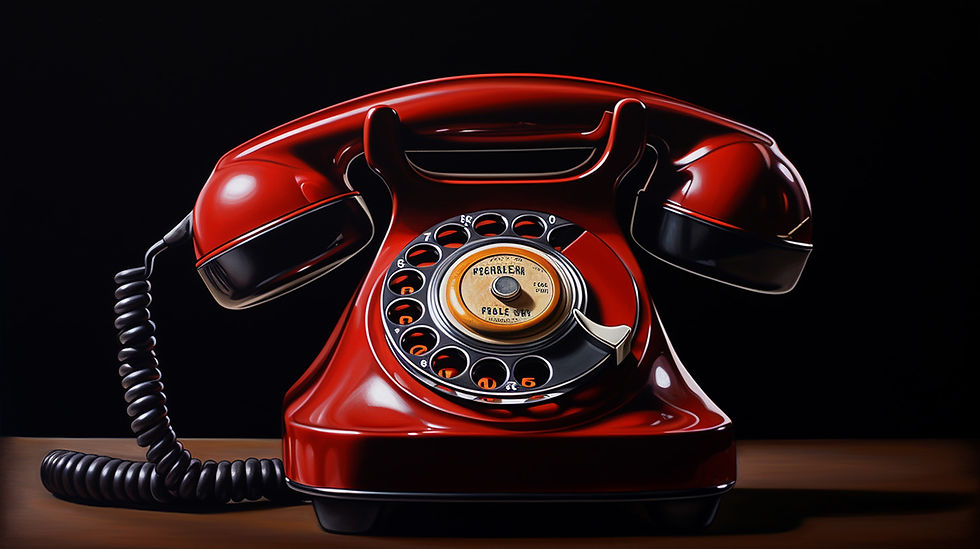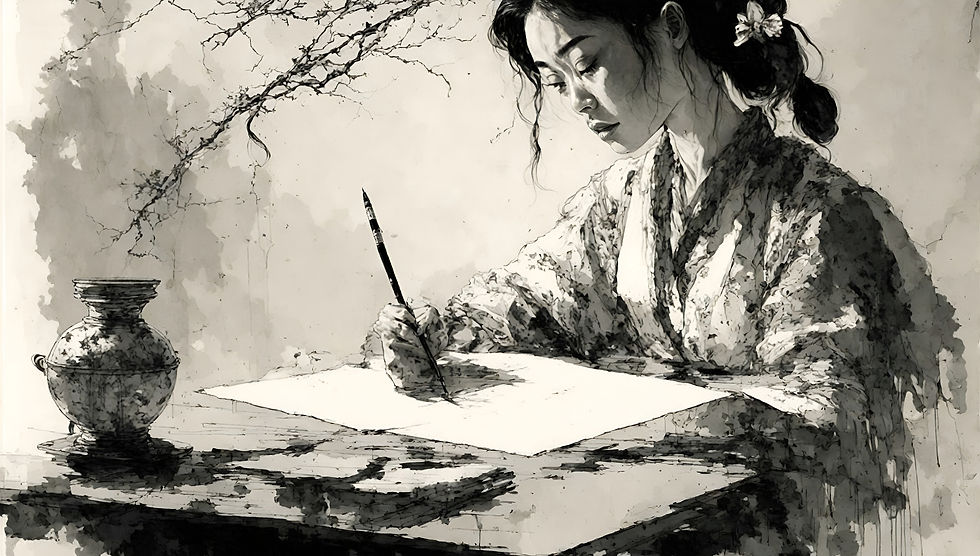Operant Conditioning in Generative AI Image Creation
- Jakob Nielsen

- Jul 25, 2023
- 5 min read
Updated: Jul 31, 2023
Summary: Generative AI for images torments users with alternating emotions of euphoria and anguish as it metes out sublime or disastrous pictures with wanton unpredictability. This makes users feel like the rat in an operant conditioning experiment, entrapping them in a ceaseless pursuit of rewards amidst sporadic punishments.
Engaging with image-generating platforms like Midjourney, DALL-E, and Stable Diffusion, I am akin to a lab rat, incessantly pushing a lever in anticipation of a rewarding food pellet. In other words, ensnared in the psychological trap of operant conditioning.
Operant conditioning is a learning process that hinges on the consequences of one's actions, either rewards or punishments. Through this mechanism, an association is made between a behavior and the outcome of that behavior. Thus, employing Midjourney to generate an impressive image for your project results in immediate gratification within a mere 10 seconds. This enticing reward lures you into repeating the same behavior, ensuring your continued patronage of Midjourney for more visual creations.

How I feel when using Midjourney. (“Lab rat” image generated by Midjourney.)
How Operant Conditioning Works
However, operant conditioning is far more complex and cunning than a mere behavior-reward cycle. Initial experiments established that a rat could be conditioned by pairing a behavior — pressing a bar — with a reward: a delicious food pellet. (I'd prefer a plate of exquisite lamb roast prepared by Alain Ducasse, but then again, I’m not a rat, so what do I know about what it likes.)
Even when the rat is deprived of its reward, it persists in pressing the bar hoping that the experiment is managed akin to present-day computer software. Here, users often respond to system failures by trying the exact same action again in the hope that the computer gods will be more favorable next time.
Later experiments showed that the rat would press the bar even more persistently if the original conditioning resulted in the delivery of food pellets only intermittently. For example, only one in three attempts might be successful. So 2 empty-handed presses are followed by one food-producing press, and the cycle repeats. This will create stronger conditioning than giving the rat its food every time. But the most potent conditioning arises from creating success at random times. Not an eternally unvarying nothing-nothing-food-nothing-nothing-food-nothing-nothing-food cycle, but for example, nothing-nothing-nothing-food-nothing-nothing-food-food-nothing-nothing-nothing-food. In both cases, the rat is rewarded with one food pellet for three presses on the bar. But the second, random sequence is a much stronger conditioning mechanism. The rat can’t predict when it will be rewarded and when it will be disappointed, and this makes it work that much harder.
The Unpredictable Rewards of Generative Image AI
Now you see why Midjourney makes me feel like the rat in those experiments. It rewards me at random times. At times, it conjures a mesmerizing image from a simple prompt. For example, this skull I made for my UX analysis of Amazon.com’s alleged use of dark patterns to mislead users in the subscription and unsubscription workflows for its Prime service.

“Skull and Bones” generated by Midjourney
Have you ever beheld a prettier skull? It did wonders for my 5-skull rating scale of Amazon’s design misdeeds.
Other times Midjourney seems like a medieval torture device, delivering endless digital detritus. Consider its abysmal attempt at sketching a pushbutton telephone for me:

“Pushbutton telephone” generated by Midjourney.
It seems to have borrowed the keypad from the Casio mathematical calculator I owned in high school. It's definitely not the elegantly designed telephone keypad from Bell Labs in the 1950s. Interestingly, Midjourney had no problem giving me a beautiful rotary-dial phone (though the numbers are incorrect):

“Rotary telephone” generated by Midjourney.
Now we see why image generation through current AI tools resembles the harshest form of operant conditioning: unpredictable rewards in the form of stunning images. The AI's decision to deliver a masterpiece or a monstrosity appears entirely arbitrary — same prompt, different results. Yet, the allure of the occasional reward keeps us users relentlessly entering those prompts.
Interestingly, text-generating AI such as ChatGPT and Claude provoke different feelings. They almost always deliver something reasonable. While they occasionally produce breathtakingly good copy, it's rare to be utterly disappointed with nonsensical text, provided the request is within their capabilities.
My emotional journey when using generative AI for image creation is a wild ride between ecstasy and despair, which makes me feel like I’m in one of those operant conditioning experiments.
Since I touched upon dark design patterns, is the erratic mix of good and bad images a manifestation of a dark pattern? I don’t believe the designers of the AI image-generation tools harbor malevolent intentions of addicting users. I suspect they are as much victims of current technological limitations as we users are. (In contrast, the deliberate use of random rewards for operant conditioning to induce user addiction, as seen in slot machine design, is indeed a dark pattern.)
What emotions do you experience when using AI tools? Please share your experiences on LinkedIn. (One common emotion is the fear of job loss, but I already addressed that in my article about AI-Induced Unemployment.)
Quiz: Test Your Understanding of This Article
Check your comprehension. Here are 7 questions about ideas and details in this article. The correct answers are given after the illustration below.
Question 1: What is the main psychological principle discussed in the article?
A. Classical conditioning
B. Cognitive dissonance
C. Operant conditioning
D. Social learning theory
Question 2: How does the author compare his experience with image-generating platforms like Midjourney to operant conditioning?
A. The platforms always reward the user with a perfect image.
B. The platforms punish the user by never producing a satisfactory image.
C. The platforms intermittently reward the user with a satisfactory image, encouraging repeated use.
D. The platforms reward the user based on the complexity of the image requested.
Question 3: According to the article, what type of reward schedule in operant conditioning creates the strongest conditioning?
A. Constant rewarding after every action
B. Intermittent rewarding with a predictable pattern
C. Intermittent rewarding with an unpredictable pattern
D. No rewarding at all
Question 4: How does the author describe the emotional journey when using generative AI for image creation?
A. Consistently satisfying
B. Consistently disappointing
C. A wild ride between ecstasy and despair
D. A steady progression from disappointment to satisfaction
Question 5: What is the author's view on the erratic mix of good and bad images generated by AI tools?
A. It's a deliberate dark pattern to induce user addiction.
B. It's a result of the malevolent intentions of the AI designers.
C. It's a manifestation of current technological limitations.
D. It's a strategy to keep users engaged with the platform.
Question 6: How does the author's experience with text-generating AI such as ChatGPT and Claude differ from image-generating AI?
A. Text-generating AI always produces nonsensical text.
B. Text-generating AI rarely disappoints and often delivers reasonable results.
C. Text-generating AI delivers results that are always breathtakingly good.
D. Text-generating AI is more unpredictable than image-generating AI.
Question 7: What does the author mean by "dark pattern" in the context of this article?
A. A type of image generated by AI
B. Incompetent UX professionals designed the AI tools
C. The deliberate use of random rewards to induce user addiction
D. The unpredictable nature of AI-generated results

Quiz Answers
Question 1: What is the main psychological principle discussed in the article?
Correct Answer: C. Operant conditioning
Question 2: How does the author compare his experience with image-generating platforms like Midjourney to operant conditioning?
Correct Answer: C. The platforms intermittently reward the user with a satisfactory image, encouraging repeated use.
Question 3: According to the article, what type of reward schedule in operant conditioning creates the strongest conditioning?
Correct Answer: C. Intermittent rewarding with an unpredictable pattern
Question 4: How does the author describe the emotional journey when using generative AI for image creation?
Correct Answer: C. A wild ride between ecstasy and despair
Question 5: What is the author's view on the erratic mix of good and bad images generated by AI tools?
Correct Answer: C. It's a manifestation of current technological limitations.
Question 6: How does the author's experience with text-generating AI such as ChatGPT and Claude differ from image-generating AI?
Correct Answer: B. Text-generating AI rarely disappoints and often delivers reasonable results.
Question 7: What does the author mean by "dark pattern" in the context of this article?
Correct Answer: C. The deliberate use of random rewards to induce user addiction



